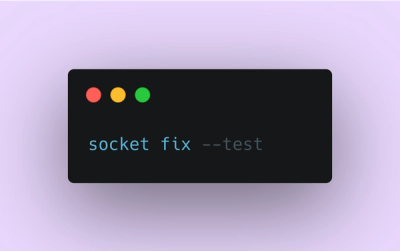
Product
Introducing Socket Fix for Safe, Automated Dependency Upgrades
Automatically fix and test dependency updates with socket fix—a new CLI tool that turns CVE alerts into safe, automated upgrades.
electron-redux
Advanced tools
Electron-Redux is an Redux Store Enhancer that helps you loosely synchronize the redux stores in multiple electron processes.
When working with Electron, using Redux poses couple of problems, since main and renderer processes are isolated and IPC is a single way of communication between them. This library, enables you to register all your Redux stores in the main & renderer process, and enable cross-process action dispatching & loose store synchronization.
# with yarn
yarn add electron-redux
# with npm
npm install electron-redux
For more details, please see the Installation docs page.
electron-redux docs are located at electron-redux.js.org. You can find there:
If you have a setup without any enhancers, also including middleware, you can use the basic setup. For the basic setup, electron redux exposes a Redux StoreEnhancer. You simply add the enhancer to your createStore function to set it up.
// main.ts
import { stateSyncEnhancer } from 'electron-redux'
const store = createStore(reducer, stateSyncEnhancer())
// renderer.ts
import { stateSyncEnhancer } from 'electron-redux'
const store = createStore(reducer, stateSyncEnhancer())
This setup is required when you have other enhancers/middleware. This is especially the case for enhancers or middleware which dispatch actions, such as redux-saga and redux-observable
For this setup we will use the composeWithStateSync function. This function is created to wrap around your enhancers, just like the compose function from redux. When using this, you will not need stateSyncEnhancer as this does the same thing under the hood. If you do, it will throw an error.
import { createStore, applyMiddleware, compose } from 'redux'
import { composeWithStateSync } from 'electron-redux'
const middleware = applyMiddleware(...middleware)
// add other enhances here if you have any, works like `compose` from redux
const enhancer: StoreEnhancer = composeWithStateSync(middleware /* ... other enhancers ... */)
const store = createStore(reducer, enhancer)
That's it!
You are now ready to fire actions from any of your processes, and depending on the scope the main store will broadcast them across your application.
Please check out the docs for more recipes and examples!
Actions fired MUST be FSA-compliant, i.e. have a type and payload property. Any actions not passing this test will be ignored and simply passed through to the next middleware.
Nota bene,
redux-thunkis not FSA-compliant out of the box, but can still produce compatible actions once the async action fires.
Furthermore, actions (and that includes payloads) MUST be serializable.
You can extend default JSON serialization used, by providing your own serialization/deserialization functions.
By default, all actions are broadcast to all registered stores. However, some state should only live in the renderer (e.g. isPanelOpen). electron-redux introduces the concept of action scopes.
To stop an action from propagating from renderer to main store, simply set the scope to local by decorating your action with stopForwarding function. Read more about it in the docs
By default, some of the actions are blocked from broadcasting / propagating, those include actions starting with @@ and redux-form. The list of ignored actions can be modified with options.
This project adheres to Semantic Versioning. Every release, along with the migration instructions, is documented on the GitHub Releases page.
Contributions via issues or pull requests are hugely welcome! Remember to read our contributing guidelines to get started!
By contributing to electron-redux, you agree to abide by the code of conduct.
FAQs
Redux & Electron: Make sure all your stores are on the same page
The npm package electron-redux receives a total of 2,139 weekly downloads. As such, electron-redux popularity was classified as popular.
We found that electron-redux demonstrated a healthy version release cadence and project activity because the last version was released less than a year ago. It has 0 open source maintainers collaborating on the project.
Did you know?

Socket for GitHub automatically highlights issues in each pull request and monitors the health of all your open source dependencies. Discover the contents of your packages and block harmful activity before you install or update your dependencies.

Product
Automatically fix and test dependency updates with socket fix—a new CLI tool that turns CVE alerts into safe, automated upgrades.

Security News
CISA denies CVE funding issues amid backlash over a new CVE foundation formed by board members, raising concerns about transparency and program governance.

Product
We’re excited to announce a powerful new capability in Socket: historical data and enhanced analytics.